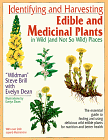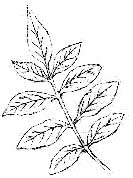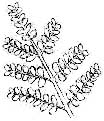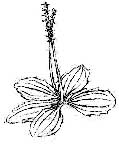|
|
 Identifying and Harvesting Edible and Medicinal Plants in
Wild (and Not So Wild) Places Identifying and Harvesting Edible and Medicinal Plants in
Wild (and Not So Wild) PlacesBy: "Wildman"
Steve Brill
Book Excerpt: Leaves
You’ll see more leaves on your field trips than any
other plant parts, so understanding them will enhance
your outdoor experiences. Leaves are solar panels par
excellence: Only seven cells thick, they harness sunlight
more efficiently than anything we’ve invented, forming
the food chain’s first link. Leaves can be oval, elliptical,
sword-like, lance-shaped, arrow-shaped, or anything in
between. They may be hairy or bald, tasty, bitter,
acrid, or toxic. Their different shapes and forms reflect
complex adaptive answers to environmental challenges:
They must contend harsh weather, hungry vegetarians,
and other plants competing for sunlight, while exposing
the largest possible surface area to the sun.
So why don’t plants with the largest leaves always win
out? In the tropics, where the climate is comparatively
uniform, they often do. But there are no benefits to
exposing leaves to shade, so small leaves sometimes
work better. Further from the equator, where weather
varies more, large leaves are a liability. Storm winds
can tear them to shreds. So leaves divide partially into
lobes, or separate completely into compound leaves.

Palmate-Compound
Leaf |

Feather-Compound
Leaf |

Doubly-Compound
Leaf |
How can you tell if you’re looking at one
compound
leaf, or many simple (undivided) leaves? For woody
plants it’s easy: Leaves come from leafbuds that form
the previous summer. A simple leaf already has next
year’s bud on the twig, next to the leafstalk. A leaflet,
the subdivision of a compound leaf, doesn’t have a bud
near its stem’s base, because no new leaflet will form
there next year. Also, twigs are wooden, but the
midribs of compound leaves are not.
There are two kinds of compound leaves:
Palmate-compound leaves have leaflets emerging from
a central location, the way your fingers emanate from
your palm. Feather-compound leaves’ leaflets emerge
along an axis, like the feathers coming from a bird’s
tail.
Some woody plants have twice-compound leaves: The
subdivisions themselves are divided. These leaves are
huge, and so are the leafbuds that produce them. Small
simple leaves usually develop from the smallest
leafbuds.

Alternate, simple,
toothed leaves |

Opposite
leaves |
Leaf configuration is basic to identifying plants. We
call
paired leaves opposite. Unpaired leaves are alternate.
Leaves that encircle a stem are whorled. Don’t look at
the newest growth to determine leaf configuration,
because the stem parts that would separate alternate
leaves may have had insufficient time to develop. Look
at older growth.
A few plants will try to fool you by having opposite
leaves in some places, and alternate leaves in others. So
look at a few parts of the plant. Always examine many
samples in nature, to get a good understanding of
what’s going on.

Basal rosette |

Double-Toothed
Leaf |
Another important leaf formation is the basal
rosette,
where all the leaves emerge from the ground at a
common point. Many plants take this form in the cold
weather, when growing tall would expose them to the
elements, there are no taller plants competing for
sunlight, and spreading in a circle captures the most
sun. One of my first magazine articles was about
cold-weather plants and basal rosettes. The editor
consistently changed the spelling of "basal" to "basil,"
leaving the readers wondering where to find the recipe
for spaghetti sauce.
Teeth are another feature that help you identify
plants—some leaves have serrated edges. If the
serrations are serrated, the leaves are double-toothed.
Double toothed leaves and twice or thrice-compound
leaves are again themes of repetition on different
scales, as described above.
The leaves’ attachment to the rest of the plant provides
further distinctions. Some leafstalks are long, others are
shorter. Some, like winged sumac’s, have flared edges.
We call these stalks winged.
Some leaves have no leafstalks The leaves that partially
surround the plant’s stem clasp it. When the leaf base
surrounds the stem, it looks like the stem is perforating
the leaf
The above distinctions are for broad leaves, which
include all leaves that aren’t needles. Needles, which
are narrow, come in different shapes and
configurations too, and we’ll discuss them as we cover
the species that have needles.
_______________________________________________
Click here to visit Steve's Web Site |
